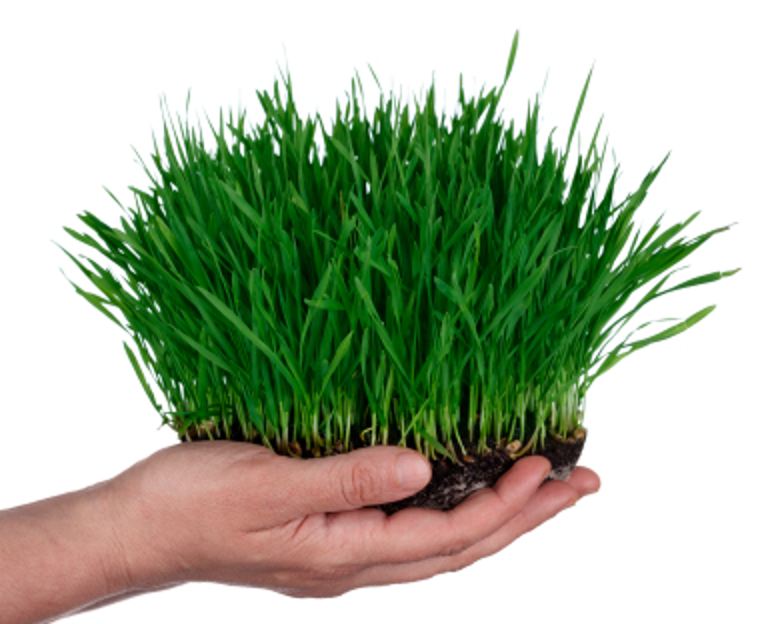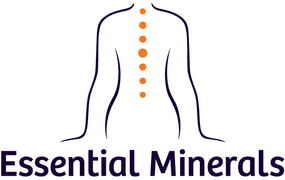Wonderful Wheatgrass
19th Feb 2021
WHAT IS WHEATGRASS?
Wheatgrass is the first young leaves of the common wheat plant Triticum aestivum. While it's a wheat product, as it is harvested before the wheat grain forms, (usually 7-10 days after sprouting) wheatgrass does not contain gluten and is safe to consume if you follow a gluten-free diet.

THE BENEFITS OF WHEATGRASS
The majority of benefits from Wheatgrass come from the chlorophyll content. Chlorophyll plays an important role in making plants green and healthy. It also has vitamins, antioxidants, and therapeutic properties that have the potential to benefit your body
Wheatgrass is nutrient-dense & packed with Vitamins:
Wheatgrass is high in iron, calcium and magnesium. It is also vitamin-rich, particularly Vitamins A, C and E as well as containing 8 essential amino acids that our bodies can’t produce.
It also contains various antioxidants:
Which prevent cell damage and reduce oxidative stress as well as possibly protecting against heart disease and various other health issues.
The best sources for living chlorophyll:
Chlorophyll is in all green plants and has a plethora of health benefits. From reducing inflammation, building blood, energizing, deodorizing, detoxifying, and weight loss. Wheatgrass juice, (as long as it is from a fresh, living plant) contains around 70% chlorophyll. The majority of benefits from Wheatgrass come from the chlorophyll content.
May aid blood sugar regulation:
Although the majority of studies have, regrettably, been on animals and not humans, the studies have shown that wheatgrass reduced blood pressure.
May reduce cholesterol:
Studies have also shown wheatgrass increased ‘good’ HDL cholesterol.
Could aid weight loss:
Due to the thylakoids within the Wheatgrass that seem to increase ‘full-ness’ and the feeling of satiety by increasing the release of hormones that decrease hunger.
Anti-inflammatory Benefits:
The chlorophyll compound in Wheatgrass has shown under test tube tests to have anti-inflammatory properties.
Eases and soothes skin condition:
Dr. Earp Thomas found that 30g of wheatgrass juice to 5-litre of water helped the skin, by adding wheatgrass juice to bath water, it soothed sore, inflamed and irritated skin and helped to eases itching.
HOW TO GROW WHEATGRASS
- Soak your wheat seed overnight (8 to 12 hours).
- Sprout the seed in a jar for the next 16 to 24 hours, rinsing the seed well three times a day.
- After a very short “tail” is visible, spread the seeds on top of soil mix in a tray. Basic potting mix or topsoil will work fine. Peat moss is an important ingredient to look for in your soil so if you have to add it, the mix is one part peat moss to three parts soil, filled halfway up a two-inch deep tray.
- Water the tray and then cover the seeds to keep them from drying out for the first three days.
- During the first three days of growth, water once a day in the morning and really soak the soil (until the tray drips is a good sign you are watering enough). Then lightly mist your seed in the evening (lift cover off to mist seed).
- On the fourth day, uncover grass (roots should begin to take over your soil), water heavily once a day and keep the grass in the shade (never direct sunlight).
- For mold problems, increase your air circulation with a fan or air conditioning.
- Harvest grass when a second blade of grass appears on the grass blades, or when the grass “splits” toward the bottom of the blade. Average growing time is seven to 12 days, depending on the weather, but still always watch for the second blade of grass as you can never judge by how many days it has been growing or how tall the grass is.
- Only harvest once. Cut grass will store in the fridge for about seven to 10 days or longer in Green Bags. Then start the process all over again with new seeds and soil.

